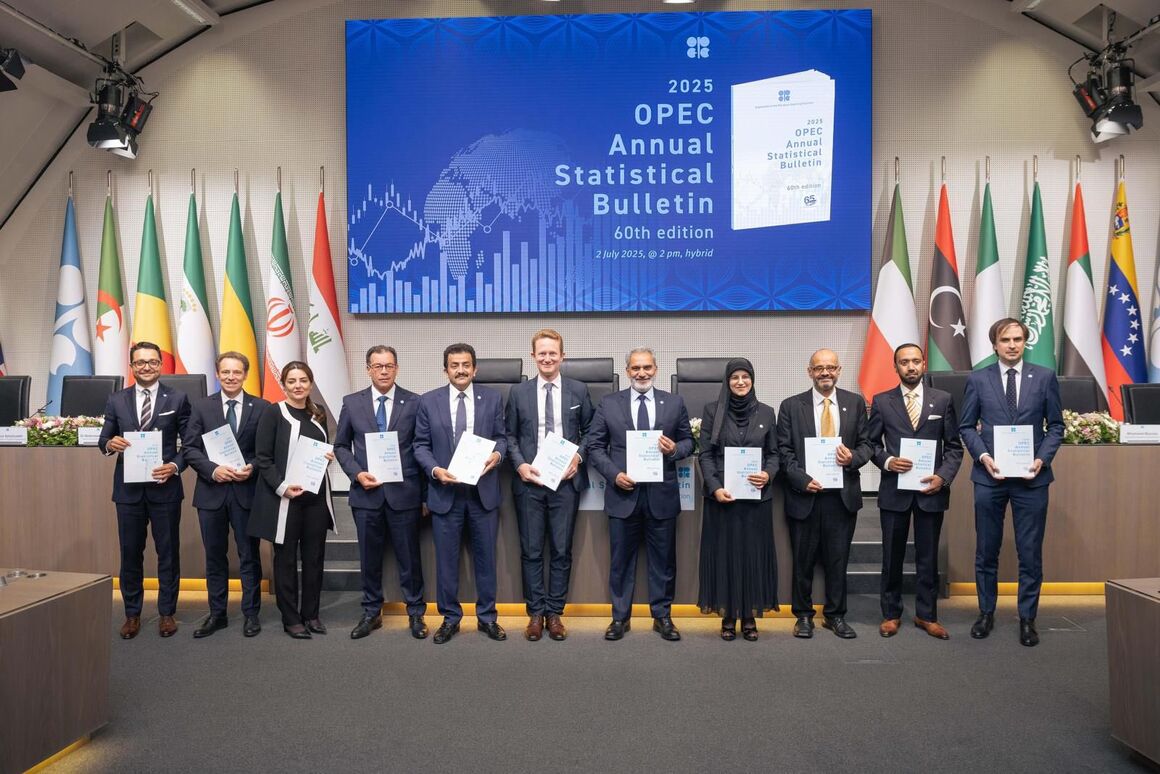The publication and its key highlights were presented by Haitham Al Ghais, OPEC Secretary General, followed by a welcoming address from Jakob Mullner, Associate Professor and Academic Director at the WU Executive Academy, the sponsor of the event, according to opec.org.
After a presentation and video featuring the publication's highlights, the launch event concluded with a panel discussion with key experts from the Secretariat's Research Division.
First published in 1965, the ASB, one of the Organization's flagship publications, continues to provide a broad range of statistics and figures on the global energy industry. Particularly focusing on oil and natural gas, in addition to major key economic indicators, the ASB serves as a leading source of reliable data for officials, policymakers, industry experts, analysts, researchers, members of academia and other stakeholders.
The publication features comprehensive information on the global oil and gas supply chain, particularly on OPEC's 12 Member Countries and 10 participating countries in the Charter of Cooperation (CoC), as well as many other countries grouped by geographical region and major economic zones all over the world.
Key highlights of the ASB, comprising data up to the end of 2024, are as follows:
World oil demand grew by 1.49 mb/d, y-o-y, or 1.5%, to reach an average of 103.84 mb/d in 2024. Oil demand grew, y-o-y, in almost every region, with the largest gains recorded in Non-OECD Asia, China, India, the Middle East, Africa, Latin America and OECD Europe. Oil demand in OPEC Member Countries was firm in 2024, gaining 0.12 mb/d, or 1.3%, y-o-y.
Total world crude oil production declined in 2024 by 0.77 million barrels/day (mb/d), or 1.0%, compared to 2023. This marked the first annual decrease, following three consecutive annual increases since 2020, reaching an average of 72.58 mb/d. Crude oil production from OPEC Member Countries and non OPEC oil-producing countries participating in the Declaration of Cooperation (DoC) declined, year-on-year (y-o-y), by 0.57 mb/d, or 2.1%, and 0.78 mb/d, or 5.2%, respectively, while crude production from non-DoC countries rose by 0.58 mb/d, or 1.8%.
World refining capacity expanded in 2024 by 1.04 mb/d, y-o-y, to stand at 103.80 mb/d. The non-OECD region, particularly China, India and the Middle East recorded refining capacity additions. Refinery capacity in the OECD increased for the first year since 2019 by 0.16 mb/d, y-o-y, as additions in OECD Americas were offset by shutdowns in OECD Europe and OECD Asia Pacific. Globally, refinery throughput increased by 0.52 mb/d, or 0.6%, to reach 85.97 mb/d in 2024, driven by higher run rates in OECD Americas and the non-OECD region, including the Middle East, Africa, India and Other Asia.
OPEC Member Countries exported an average of 19.01 mb/d of crude oil in 2024, a decrease of 0.70 mb/d, or 3.5%, compared to 2023. Following the same pattern seen in previous years, the bulk of crude oil from OPEC Member Countries - 13.67 mb/d, or 71.9% - was exported to Asia. Exports of petroleum products from OPEC Member Countries averaged 5.07 mb/d during 2024, up by 0.29 mb/d, or 6.1%, compared to 2023.
World proven crude oil reserves stood at 1,567 billion barrels (bn b) at the end of 2024, higher by 2 bn b, or 0.1%, compared to 2023 levels. Proven crude oil reserves in OPEC Member Countries remained flat at 1,241 bn b at the end of 2024.
The publication is available as an interactive version and as PDF download on the OPEC website, as well as through a Smart App compatible with iOS and Android platforms.


Your Comment